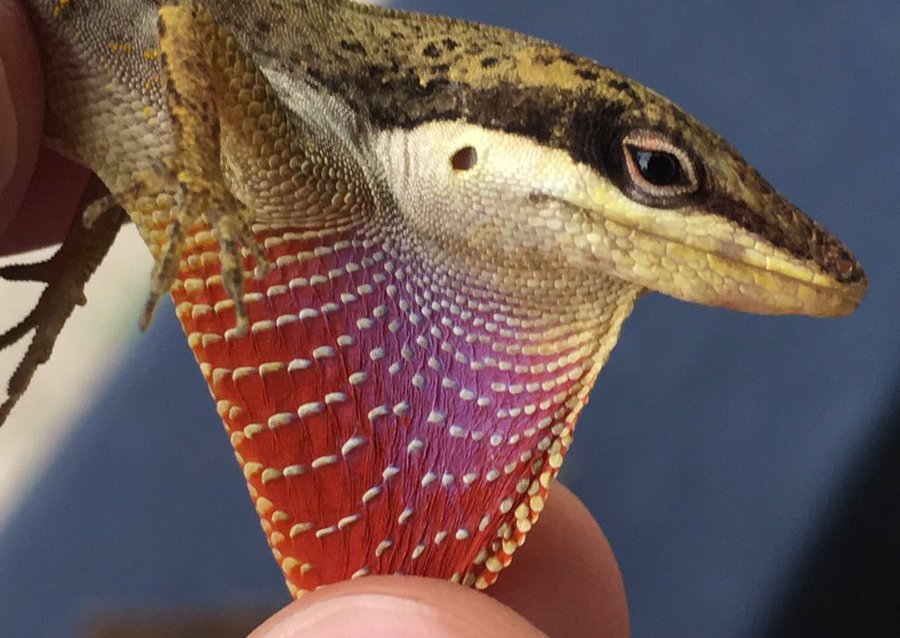
Photo: Delano Lewis, iNaturalist
This week’s anole, Anolis sabanus, can only be spotted on the island of Saba (Dutch W.I.).
Also called the Saban anole, this tan to pale grey coloured species is sexually dimorphic with males being covered with black spots/patches at an SVL of 29-72mm and females having a dorsal stripe and an SVL of 23-25mm. Their dewlaps are green or orange tinted.

Photo: Mark Yokoyama
In 2016, there was an introduction of the anole on the neighbouring island of Sint Eustatius. They belong to the bimaculatus series of anoles which includes other island endemics like Anolis oculatus (from my home island of Dominica).
Gina Zwicky, New Orleans based herper, is currently working on a study to see if there is a link between parasite pressure and the rise of immunity in generations of this anole, examining if evidence can be found of fluctuating selection in a natural population. Anoles are incredibly useful for research with their genomes being readily available for reference, how quickly they adapt and other factors. Island endemics especially are great research subjects due to their isolation which helps to eliminate certain other variables.

Photo: iNaturalist

















![Anolis alutaceus [image] | EurekAlert! Science News](https://i0.wp.com/www.eurekalert.org/multimedia/pub/web/23297_web.jpg?resize=400%2C600&ssl=1)














